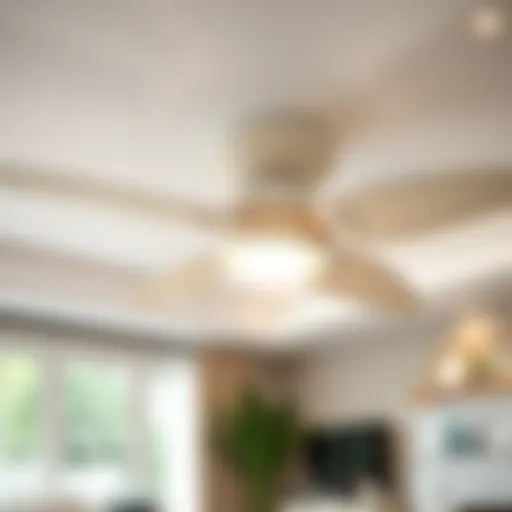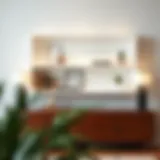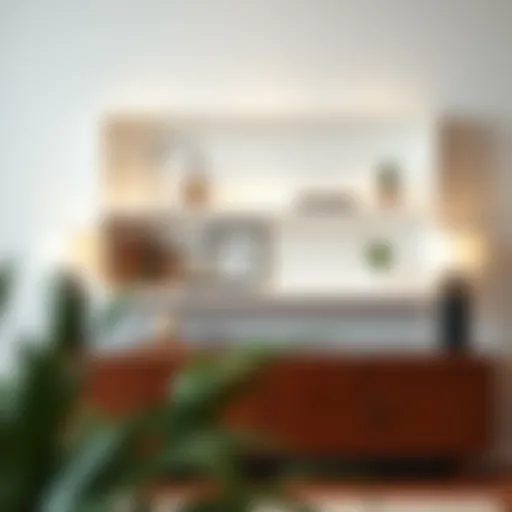Understanding Cupboard Door Soft Close Systems
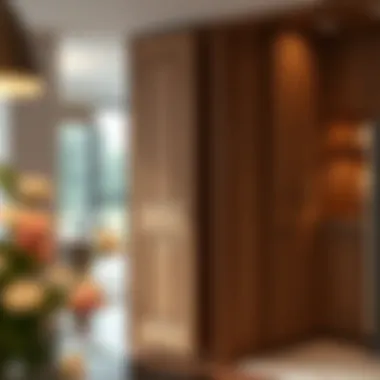

Intro
As modern living spaces evolve, the design and functionality of cabinetry play a crucial role in enhancing the overall experience of our homes. One innovative mechanism that has gained popularity in recent years is the soft close system for cupboard doors. Not only do these mechanisms ensure a gentle, controlled closing action, they also significantly contribute to reducing noise and wear-and-tear over time. In this article, we will dissect the inner workings of these systems, their advantages in both aesthetics and practicality, and provide essential insights for those looking to incorporate them into their homes.
Furniture Styles and Trends
When considering soft close systems, it’s important to understand how they fit in with current furniture trends and styles.
Modern vs. Traditional: Understanding the Aesthetics
Cupboards are no longer just functional storage spaces; they have become integral to a room’s decor. Modern design trends favor clean lines and minimalistic aesthetics, which are beautifully complemented by the sleek, subdued action of soft close mechanisms. In contrast, traditional cabinetry often showcases ornate details, and the seamless closing action of soft close hinges can enhance the sophistication of classic designs without compromising their charm.
Color and Material Trends: What's In and What's Out
Choosing the right colors and materials can dramatically affect the appeal of any cabinetry. Natural wood finishes are experiencing a resurgence, blending perfectly with soft close systems to create both warmth and functionality. On the other hand, bold colors and innovative materials like high-gloss acrylics or matte metals are trending, and they also benefit from the gentle closing action, maintaining their integrity longer than traditional hinges would allow.
Incorporating soft close systems into your cabinets is not only about adding functionality; it’s also about enhancing the overall aesthetic appeal and longevity of the furniture.
"In the world of cabinetry, even the quietest changes can bring about the loudest transformations."
Furniture Care and Maintenance
To keep your cabinets looking fresh and operating at their best, care and maintenance are key.
Tips for Prolonging the Life of Your Furniture
- Regular Cleaning: Dust and debris can hinder the functionality of soft close systems. Regularly wipe down surfaces with a damp cloth to keep them clear.
- Check for Wear: Periodically inspect the mechanisms for signs of wear or misalignment. Early detection can prevent costly repairs.
- Avoid Overloading: Ensure that cupboards are not overloaded. Even soft close hinges can wear out if subjected to excessive weight.
DIY Repair Hacks for Common Furniture Issues
If you experience issues with your soft close systems, sometimes simple solutions can save you costly repairs.
- Lubrication: Often, just applying a silicone-based lubricant can restore smooth function to stubborn hinges.
- Adjusting Hinges: If a door isn��’t closing properly, many soft close hinges allow for minor adjustments to realign the door with minimal effort.
Incorporating a soft close mechanism into your cupboard doors not only extends their lifespan but also enhances user satisfaction by providing quieter operation. For more information on maintaining cabinetry, feel free to explore helpful resources at Wikipedia or Britannica.
As we delve deeper into the mechanics and benefits of soft close systems, homeowners, designers, and DIY enthusiasts can expect a wealth of information that will guide their choices in cabinetry design and functionality.
Foreword to Soft Close Technology
Cupboard door soft close systems have transformed the way we interact with our cabinetry. They bring an element of convenience and sophistication that's hard to overlook. Imagine a bustling kitchen, pots and pans clanging as you prepare dinner, and the last thing you want is a door slamming shut, rattling everything in its vicinity. Soft close technology steps in to mitigate this chaos. It seamlessly shuts doors, ensuring a whisper-soft proximity to closure, making it an essential feature, especially in homes with active lifestyles.
This section will delve into the essence of soft close technology, exploring its definition, purpose, and historical evolution. Understanding these aspects can significantly influence decisions made by homeowners, designers, and even retailers aiming to enhance customer experiences.
Definition and Overview
Soft close systems are mechanical devices designed to control the closing movement of cabinet doors. They use either hydraulic or mechanical methods to slow down the door's final closing phase. Instead of a rapid closure, this technology ensures that the door glides gently into position, providing a quieter and smoother experience. The mechanism can be found in different styles and formats, making it versatile enough for a variety of cabinet designs.
The simplicity of their operation belies their clever engineering. When the door approaches its closed position, a damping mechanism engages, slowing it down effectively. This prevents the jarring noises typically associated with traditional hinged doors. Besides the auditory benefit, soft close devices also prolong the life of both the cabinetry and its hardware, reducing wear and tear.
Historical Context
The roots of soft close technology can be traced back several decades. Initially, kitchen cabinets operated on simple hinge systems that were functional but lacked finesse. The turning point came in the latter half of the 20th century when designers began to recognize the need for quieter, safer, and more user-friendly solutions in cabinetry. Early versions of soft close systems were quite rudimentary, often using basic springs or dampers that didn't quite deliver consistent results.
As design and technology evolved, so did the mechanisms used in these systems. In the 1990s, advancements in materials and precision engineering led to more sophisticated designs. Companies began experimenting with hydraulic cylinders and pneumatic devices, refining the technology to make it accessible for residential use. Today, a vast array of soft close options are available on the market, from budget-friendly models to high-end luxury variants, reflecting not just improved technology but also changes in consumer preferences and lifestyles.
Mechanics of Soft Close Systems
Understanding the mechanics of soft close systems is fundamental in appreciating their role in modern cabinetry. These systems have redefined how we approach kitchen and storage design, marrying functionality with comfort. The ability to close doors quietly not only enhances the living experience but also preserves the integrity of the cabinetry over time.
Every aspect of soft close systems is crafted to ensure that cabinets remain user-friendly and aesthetically pleasing. The primary focus is installing components that work in unison to bring about a seamless operation. This intricate design serves numerous benefits, which we will delve into in the following sections.
Components of a Soft Close System
To grasp how soft close systems operate, it's essential to recognize their main components. At the core, we have the hinges and pistons that play vital roles in the operation. The hinges are strategically designed to support the door weight and ensure it can open and close smoothly. Meanwhile, the pistons, or dampers, are responsible for controlling the door's closing speed.
Here’s a deeper breakdown of the components:
- Hinges: The most crucial part that connects the door to the cabinet frame. They need to be robust, usually made of metal to withstand frequent use.
- Dampers: These components are what make a soft close system unique. They slow down the door as it approaches the cabinet frame, allowing it to close gently without slamming.
- Guide rails: In some setups, guide rails assist in keeping the doors aligned and prevent misalignment during use.
When combined, these components create a system that not only enhances user experience but also extends the lifespan of your cabinetry.
How Soft Close Mechanisms Function
The operation of soft close mechanisms typically revolves around the principles of leverage and hydraulic resistance. When a cupboard door is opened, the hinge allows free movement. As the door begins to close, the damper engages, providing a controlled resistance.


This motion can be summarized in three stages:
- Opening: The door swings open freely, akin to traditional hinges, allowing for full access to the cabinet's interior.
- Closing: As the door begins to close, the damping mechanism activates. Here lies the beauty; it slows the door down before it reaches the shut position.
- Latch: Finally, the door gently meets the cabinet frame, ensuring no loud bang occurs.
The smoothness of this transition not only minimizes noise but also prevents damage from slamming. Homes with small children or pets especially benefit from having this type of mechanism, keeping fingers and paws clear from harm.
Types of Soft Close Systems
Soft close systems can generally be categorized into two main types: hydraulic systems and mechanical systems. Each type has its pros and cons, suited for different preferences and needs.
Hydraulic Systems
Hydraulic systems utilize fluid to create resistance during the door's closing motion. This creates a very smooth and controlled closing experience. The standout feature of hydraulic systems is their ability to adapt to varying weights and sizes of doors, maintaining control regardless of the scenario.
- Advantages: These systems are remarkably quiet and can handle heavier doors due to their robust design. They tend to have a longer lifespan compared to mechanical systems, especially in high-traffic areas.
- Considerations: The primary drawback involves potential maintenance issues. If a hydraulic leak occurs, it can lead to malfunction.
Mechanical Systems
On the other hand, mechanical systems utilize springs and levers to generate resistance. This mechanism is slightly less sophisticated than its hydraulic counterpart but remains effective for many applications. They often rely on a cleverly designed spring mechanism that absorbs energy as the door closes.
- Advantages: Mechanical systems are generally simpler, which makes installation easier and usually results in lower costs. They are also quite reliable and less prone to failure over time.
- Considerations: However, these systems may not perform as well with heavier doors, and their closing speed can vary, offering less predictability compared to hydraulic models.
Finale
The intricate workings of soft close systems, along with their various types, significantly improve everyday experiences in the home. Understanding the mechanics behind them leads to better-informed choices when selecting cabinetry. As technology evolves, these systems continue to offer greater advantages, solidifying their place in both contemporary kitchens and broader interior designs.
"A quiet home is not just a luxury; it's a haven. And with soft close technology, that haven is within reach."
For more insights into home improvement solutions, consider exploring resources on Wikipedia or Britannica.
Advantages of Cupboard Door Soft Close Systems
Soft close systems have transformed how we interact with cabinets in our homes, offering significant benefits that extend beyond mere convenience. In this section, we’ll explore the practical advantages that these systems bring to daily life, focusing on noise reduction, enhanced durability, improved safety, and aesthetic appeal.
Noise Reduction
One of the most noticeable benefits of cupboard door soft close systems is their ability to cut down on noise. Traditional cabinet doors tend to slam shut, creating a jarring sound that can disrupt a peaceful environment. On the other hand, soft close systems incorporate hydraulic dampers that control the door’s speed as it closes. This means that instead of that annoying bang, you get a gentle, smooth closure.
This not only makes for a more tranquil kitchen or living area but is particularly beneficial in homes with open floor plans, where sound can carry from room to room. Imagine having an early morning coffee or unwinding after a long day without the abrupt sound of cabinet doors slamming shut.
"The quietness of soft close systems creates an atmosphere of serenity in the home, enhancing the experience of everyday life."
Enhanced Durability
Soft close systems also enhance the longevity of cabinetry. The gentle closing mechanism reduces the wear and tear that comes with traditional hinges and latches. When cabinet doors slam shut repeatedly over time, they might suffer paint chipping, scratching, or worse—structural damage. With soft close systems, the controlled movement means less stress on both the door and the hinges, ultimately leading to a longer lifespan for your cabinets. Investing in this technology could yield considerable savings on repairs or replacements in the long run.
Improved Safety
Safety is an ever-present concern in both domestic and professional settings. In homes with small children, open or abruptly closing cabinet doors can pose an injury risk. Soft close systems help mitigate this danger. The slow, cushioned closure reduces the risk of fingers being caught—a concern that weighs heavily on many parents. Furthermore, users do not have to worry about the cabinet doors unexpectedly swinging back or slamming shut, making this a secure option for any household. The peace of mind these systems offer—knowing that they create a safer environment—is invaluable.
Aesthetic Appeal
Beyond functionality, soft close systems also contribute to a kitchen or storage area’s visual allure. The seamless operation presents a polished and modern look. Cabinet doors that glide quietly into place give an air of sophistication, which can enhance interior design aesthetics. Whether it's a contemporary kitchen or a traditional living room, soft close systems can blend right in, offering elegance along with practical value.
In addition, the ability to integrate such technology into a variety of styles makes it appealing for homeowners and designers alike.
In summary, the advantages brought by cupboard door soft close systems extend well beyond mere convenience. They contribute significantly to a quieter atmosphere, improved durability and safety of your cabinetry, along with elevating the overall aesthetic appeal. These factors make them a worthwhile consideration for anyone looking to enhance their space.
Installation of Soft Close Mechanisms
Installing soft close mechanisms can dramatically enhance the usability and functionality of cupboard doors. This process not only improves the everyday experiences of users but also extends the longevity of cabinets themselves. With a successful installation, individuals can look forward to a quieter home environment, reduction in wear and tear on doors, and an overall uplift in their kitchen's aesthetic.
Having the right tools and mindset can make the installation of soft close systems smoother. With a few considerations in mind, even a novice homeowner or DIY enthusiast can achieve a professional finish without needing to call in the experts.
Preparation for Installation
Getting ready for the installation process is half the battle won. Before jumping in, it’s essential to take a few preparatory steps:
- Gather Necessary Tools: Make sure you have all tools on hand such as a screwdriver, measuring tape, drill, and, perhaps, a level. A good pair of safety glasses wouldn’t hurt, either!
- Select the Right Soft Close Mechanism: Based on your cupboard design, select compatible soft close systems. Hydraulic models tend to be smoother, while mechanical systems might suit more budget-minded projects.
- Clear the Workspace: Ensure the area around the cabinets is free from clutter to provide ample space for maneuvering.
- Read Instructions Carefully: Different systems come with various detailed instructions. Familiarizing yourself with these will lower the chances of errors during installation.
Step-by-Step Installation Process
After you’ve mentally prepared and gathered everything required, it’s time to roll up your sleeves. Here’s a simplified step-by-step guide:
- Remove Existing Hinges: If applicable, detach the previous hinges by opening the door and unscrewing the screws. Set them aside.
- Install the Soft Close Mechanism: Depending on whether your choice is hydraulic or mechanical:
- Attach the Door: Align the door properly with the new soft close system attached. Secure it by screwing in the hinges.
- Test the Door Motion: Open and close the door to ensure the soft close mechanism is functioning as expected. You should feel a smooth close without slams or jarring movements.
- Adjust if Necessary: If the door doesn’t close softly as desired, refer back to the instructions and make any adjustments if necessary.
- For hydraulic systems, attach the hydraulic arm to the cabinet using the provided screws.
- In mechanical systems, install the pre-loaded springs or dampers precisely in accordance with the instructions.
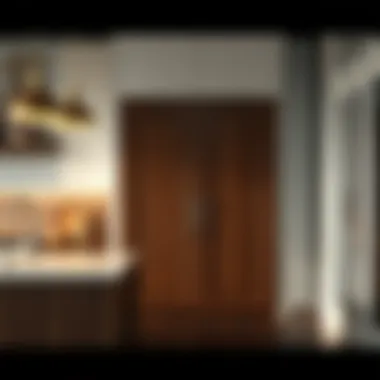

This step-by-step guide serves to provide clarity and ease into an otherwise daunting process. Remember, patience is a virtue here!
Common Installation Mistakes
Awareness of possible pitfalls can save time—and headaches—during the installation process. Here are a few common mistakes to avoid:
- Not Measuring Twice: Failing to measure the door alignment can lead to uneven closing mechanisms. Always check your measurements more than once!
- Ignoring Manufacturer Instructions: Thinking you know better could lead to disasters. Follow the instructions specific to your system for the best outcome.
- Over-Tightening Screws: It's easy to apply excessive force when securing screws, but this can lead to damage. Just tighten it enough to secure the hinge in place.
- Forgetting Adjustments: After installation, not taking the time to adjust the mechanisms can result in a subpar experience. Don’t rush through this crucial step!
By keeping these preparations, step-by-step processes, and common mistakes in mind, you're well on your way to successfully installing a soft close mechanism. With just a little time and commitment, you can transform your cabinets into a more functional and aesthetically pleasing space.
"Proper installation of soft close systems can greatly enhance the user's experience, providing both functionality and style."
For more detailed information on cabinet installations, check out resources like Wikipedia or Britannica.
Maintenance of Soft Close Cabinets
Maintaining soft close cabinets is essential for ensuring their longevity and functionality. These systems are designed to enhance usability and create a quieter environment, so regular upkeep is necessary to maintain their seamless operation. Homeowners, designers, and DIY enthusiasts alike will benefit from understanding how to properly care for these mechanisms.
Soft close systems rely on sensitive components and intricate mechanisms. Therefore, even minor negligence in maintenance can lead to problems. Regular care not only extends the life of your cabinets but also ensures that they operate correctly. Keeping this in mind can save you from costly repairs or replacements down the line.
Routine Checks
Performing routine checks on your soft close cabinets can help preemptively catch any potential issues. Here are some critical areas to focus on:
- Hinges and Pivots: Examine hinges for visible wear and tear. Ensure they are not rusted or loose, as this can affect how the doors align and close.
- Lubrication: A light application of lubricant on moving parts can help maintain smooth operation. Avoid heavy oils, as they can attract dust and grime.
- Alignment: Make sure the doors are aligned properly. Misalignment can prevent the soft close feature from working as intended. If you notice gaps or unevenness, adjustments may be in order.
- Cleaning: Dust and debris can accumulate in the mechanisms, so periodic cleaning is necessary. Use a soft cloth to wipe down surfaces and vacuum any gaps where dirt might collect.
- Damages: Regularly inspect for dents or chips on the cabinet doors. These damages can lead to bigger problems, especially if they affect the functionality of the soft close mechanisms.
Troubleshooting Common Issues
Despite care, certain issues may arise over time that might hinder the performance of soft close cabinets. Some typical problems encountered include:
- Slow or No Closing: If the cabinet doors are slow to close or do not close at all, the soft close mechanism may be malfunctioning. This could be due to dirt accumulation or a fault in the hydraulic system. A simple cleaning can sometimes remedy the situation.
- Unwanted Noise: If you hear unusual sounds when closing doors, it could indicate that the hinges or the soft close dampers need lubrication or are misaligned. Ensure everything is sitting snugly and reapply lubricant where necessary.
- Door Misalignment: If one door closes faster than the other, it might cause them to be out of alignment. Adjust the hinges or consider professional help if adjustments are out of your skill set.
- Frequent Jamming: If the doors frequently jam when closing, check for obstruction. Ensure there are no items inside the cabinets causing resistance, and inspect the hinges for any signs of damage.
By keeping an eye on these elements, not only can you ensure that your soft close cabinets stand the test of time, but you can also enjoy the calm and clean experience they provide in your home. Regular maintenance may seem like a small effort compared to the convenience and luxury of soft close cabinets, but it goes a long way in preserving their functionality.
Design Considerations for Soft Close Cabinets
When delving into the realm of cupboard door soft close systems, one must appreciate the nuanced interplay between aesthetics and functionality. Designers and homeowners alike have to strike a balance between the desired look and the practical benefits offered by these systems. It's not just about putting a shiny mechanism into your cabinetry, but rather ensuring that it integrates seamlessly within the overall design ethos of the space. Various elements come into play here, such as material selection, size, and the desired user experience. Understanding these considerations can lead to better choices that enhance both the livability and style of one’s home.
Choosing the Right Style
Selecting the appropriate style of soft close mechanism often hinges on the overall décor of the space. For instance, modern kitchens may benefit from sleek, minimalist designs that align with high-gloss finishes and clean lines. Alternatively, a rustic kitchen might favor warm woods with visible hardware, allowing the soft close system to blend naturally into the theme.
It's also important to consider the cabinetry itself; shaker-style cabinets could demand a soft close solution that is discreet yet durable. Additionally, the finish of the drawers and doors can make a significant difference, as choosing contrasting colors may highlight the soft close features, nudging the visual appeal forward.
Integrating Soft Close in Different Spaces
Kitchens
The kitchen is often described as the heart of the home, notorious for its dynamic nature—where culinary aspirations clash with the everyday bustle of family life. Utilizing soft close mechanisms in kitchens adds a layer of tranquility to this often chaotic space. The gentle closing action not only reduces noise but also minimizes the risk of injury, especially in homes with young children. A notable characteristic of kitchens is the constant use of cabinets, where durability of fittings is paramount. Soft close systems can withstand repeated use, making them a popular choice. Furthermore, integrating these systems into a kitchen design can enhance the perception of luxury, characterized by smooth, whisper-soft transitions that elevate the overall user experience.
Laundry Rooms
Laundry rooms typically present a utilitarian environment; however, incorporating soft close systems can significantly enhance their functionality. One characteristic of laundry rooms is the often cramped nature of the space. Soft close mechanisms are compact and can fit into tight areas without much hassle. These systems notably reduce the loud bangs associated with slamming doors when dealing with armfuls of laundry, which can be a welcome treat during late-night wash cycles. They not only contribute to a more organized and less stressful atmosphere but also foster the longevity of the cabinetry against wear and tear from constant usage.
Closets
Closets often serve as our personal hideaways, storing everything from clothing to treasured keepsakes. The soft close mechanism in closets promotes an orderly environment and adds a touch of sophistication to what might traditionally be a neglected space. One key characteristic of closets is their variability in size and design. Integrating a soft close feature into smaller, cramped closet spaces can bring an unexpected level of luxury to the daily routines of the user. The smooth operation hides the hustle-bustle of everyday life and allows for a more pleasant experience, emphasizing organization without the clatter typically associated with hurried movements in limited space.
Comparison with Traditional Cabinet Mechanisms
When contemplating kitchen and storage design, the choice of mechanisms for cupboard doors plays a pivotal role. Soft close systems represent a significant advancement over traditional cabinet hinges. Understanding the differences between these two options is essential for homeowners, designers, and DIY enthusiasts alike. The comparison sheds light on specific elements, benefits, and considerations regarding functionality, cost, and overall user experience.
Soft Close vs. Regular Hinges
Soft close systems operate differently than their traditional counterparts. Regular hinges, while functional, lack the integrated damping mechanism that soft close solutions provide. This leads to noticeable differences in performance and user satisfaction.
- Functionality:
- Ease of Use:
- Safety Features:
- Regular Hinges: Open and close cabinets with a simple pivot, often slamming shut if not gently guided. Users may find themselves cringing at the noise and potential disturbance.
- Soft Close Mechanisms: These incorporate a dampening mechanism, allowing doors to close gradually and quietly. This improvement significantly enhances the overall kitchen or room experience, promoting peace and tranquility.
- Regular Hinges: Can be cumbersome, especially for little ones or elderly family members who might struggle with door slamming.
- Soft Close Systems: Offer a gentle closing action regardless of how forcefully the door is pushed, providing a hands-free convenience.
- Regular Hinges: No safety features apart from standard design, which may lead to pinched fingers.
- Soft Close Mechanisms: Reduce the risk of accidents from slamming doors, creating a safer environment, particularly in homes with children.
In summary, while regular hinges may seem like the traditional choice, the myriad benefits that soft close systems offer make them preferable in many scenarios.
Cost Implications
The transition from traditional cabinet mechanisms to soft close systems often raises eyebrows due to the associated costs. On the surface, one might think that sticking with regular hinges is a more economical choice. However, a deeper look reveals nuanced implications worth considering.
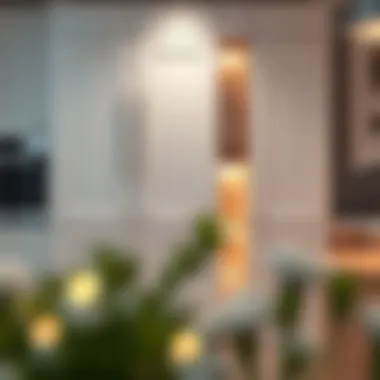

- Upfront Costs:
- Long-Term Value:
- Noise Reduction Benefits:
- Installation Costs:
- Soft close hinge systems typically come with a higher price tag compared to regular ones. This initial investment reflects the advanced engineering and materials involved in crafting these mechanisms.
- Lower need for maintenance: Soft close systems are designed for durability, which means they often require fewer repairs over time compared to traditional hinges. Regular hinges may wear out faster and need replacement sooner.
- Enhanced user satisfaction might lead to more substantial investment in cabinetry upgrades, increasing property value when it comes time to sell your home.
- Consider how many times slamming doors can lead to less harmonious living situations. The noise reduction of soft close systems can translate to a more peaceful environment, making the initial cost a small price to pay for ongoing tranquility.
- Depending on the choice of DIY or professional installation, soft close mechanisms might incur additional charges—yet the promise of longevity and functionality can justify these costs.
“Sometimes, investing a little more for the convenience and peace of mind is worth its weight in gold.”
Exploring the comparisons presents a clear picture of what different mechanisms offer. Evaluating needs, usage patterns, and financial considerations empowers smart choices in cabinetry, ensuring satisfaction for years to come.
Future Trends in Cupboard Door Technology
Cupboard door technology has come a long way, but it’s far from static. Future trends promise innovations that not only enhance functionality but also enrich user experiences. As homeowners look for smarter, sleeker solutions, understanding these trends can be vital for both design aesthetics and practical use. By staying ahead of the curve, you'll find that modern cupboard solutions offer a blend of style and substance, giving spaces an edge in today’s fast-paced lifestyle.
Smart Technologies
Smart technologies are carving a niche in cupboard door systems. Imagine opening a cabinet simply by walking near it, thanks to sensors! This technology offers convenience, especially when your hands are full. Smart soft close systems can integrate with home automation setups, allowing users to control their cabinets remotely through apps. This means you’ll have the ability to monitor and adjust your cupboard doors even from a distance.
Consider these benefits:
- Convenience: Automatic opening reduces the need for physical contact, which is handy for users with mobility issues.
- Integration: These systems can connect with smart home devices, allowing for coordinated actions throughout your home.
- Data Collection: Some advanced systems even track usage patterns, enabling smarter decisions for storage solutions in the future.
Moving towards smart technology isn’t just about adding gadgets; it’s about enhancing accessibility and adapting to the ever-evolving needs of users.
Sustainability Initiatives
As the world becomes more eco-conscious, sustainability initiatives in cupboard door technology are gaining traction. Manufacturers are increasingly focused on using sustainable materials, such as bamboo or recycled metals, for crafting cupboard components. This shift not only minimizes environmental impact but also appeals to a growing demographic concerned about sustainability.
Here are notable aspects of sustainability in cupboard design:
- Eco-Friendly Materials: By opting for sustainable wood or non-toxic finishes, homeowners contribute to reducing deforestation and harmful emissions.
- Durable Design: Sustainable systems are often built for longevity, which translates to fewer replacements over time and less waste.
- Energy Efficiency: Emerging technologies also focus on reducing energy consumption, from the manufacturing process to the end-user experience.
Using sustainable materials means you get quality without compromising the planet, making it a smart choice for conscious consumers.
Combining these trends ensures that cupboard systems not only meet the demands of modern living but also safeguard the future. Keeping abreast of these developments is crucial for any homeowner, designer, or DIY enthusiast looking to create a functional yet stylish environment.
Expert Recommendations
When considering the installation of cupboard door soft close systems, expert recommendations play a critical role. These insights from professionals in cabinetry and interior design can significantly enhance both functionality and aesthetics in your space. Selecting the right components ensures that the soft close technology performs optimally, while also fitting seamlessly into your overall design scheme. Moreover, tailored guidance helps in avoiding common pitfalls during the selection process, ensuring that the end result is not only pleasing to the eye but also durable and effective.
Selecting Quality Products
Choosing quality products is paramount for achieving the best results with soft close systems. Not all soft close mechanisms are created equal, and the market is brimming with options ranging from top-tier brands such as Blum and Hettich to budget alternatives found in home improvement stores. Here’s how to sift through the sea of offerings:
- Material Durability: Opt for systems made from high-quality metals or durable plastics. These materials tend to withstand the test of time and ensure consistent performance.
- Weight Capacity: Make sure to assess the weight limits of the soft close mechanisms. Some lighter systems may not operate effectively on heavier doors, so understanding specifications is crucial.
- Mechanism Type: Evaluate whether you prefer hydraulic or mechanical systems. Hydraulic systems often provide a smoother motion but may come at a premium price, whereas mechanical options might be simpler and more budget-friendly.
- User Reviews: Consider customer feedback on quality and usability. This offers real-world insights that specifications alone cannot provide.
Ultimately, investing time in selecting quality products can save you from the headache of malfunctions down the road.
Maintaining User Experience
Maintenance is just as critical as selection for ensuring a lasting user experience with soft close cabinets. Over time, hinges and mechanisms can wear out, which could lead to inconsistent performance. Here are some practical tips to keep your soft close systems in top functioning condition:
- Routine Lubrication: Periodically apply a light lubricant to the hinges to ensure smoother operation. This can prevent unnecessary friction that might compromise the soft close feature.
- Regular Inspections: Check for loose screws or misalignment regularly. Catching small issues early can prevent bigger problems later.
- Cleaning: Dust and debris can accumulate in the mechanisms over time. Wiping them down during your regular cleaning routine can help maintain their efficiency.
A well-maintained soft close system not only works better but also prolongs its lifespan, providing continued aesthetic and functional value in your home.
"Quality isn’t just about what you see on the surface; it’s about what you feel every time you open a cupboard." - Anonymous
For additional insights, you might find resources on cabinetry techniques helpful:
Ending
In wrapping things up, it's clear that cupboard door soft close systems are more than just a luxury add-on; they embody a leap forward in cabinet design and functionality. These systems not only offer enhanced durability but also elevate safety, significantly reducing the risk of accidents for children and pets alike. Homeowners looking to blend aesthetics with practicality find themselves drawn to the smooth experience these mechanisms offer, making them invaluable in any modern kitchen or storage space.
The quiet operation of soft close systems cannot be overstated. An essential part of creating a peaceful home environment, they minimize noise disturbances, which can be particularly appealing in busy households. This feature is complemented by their elegant design, ensuring that even amidst heavy use, cabinets maintain a polished and sophisticated appearance.
Moreover, considering the trends in home automation and sustainability, soft close technology is becoming a crucial factor in future-proofing cabinetry. Homeowners, designers, and DIY enthusiasts alike should prioritize the integration of these systems in their projects for a blend of style, safety, and serenity.
Summary of Key Points
- Enhanced Durability: Soft close systems extend the lifespan of cabinetry by reducing wear and tear on hinges.
- Safety First: They contribute to a safer environment, which is especially vital for homes with young children.
- Noise Reduction: Quiet closing mechanisms help in maintaining a peaceful home atmosphere.
- Aesthetic Integration: Soft close technology offers a seamless look, enhancing the overall design of the space.
- Future Trends: Continued advancements in smart technology and sustainability will likely promote further adoption of soft close systems.
Final Thoughts on Soft Close Technology
As we ponder the future of cabinetry, soft close technology stands as a testament to innovation in everyday living. It's amazing how something simple like a soft close hinge can transform daily routines, making them smoother and more enjoyable. Whether you're gutting a kitchen or looking to refine a cozy closet, it’s worth taking the time to consider these systems.
Ultimately, investing in quality soft close systems is investing in not just materials, but also in ongoing comfort and ease of use. For those passionate about home design or just trying to keep things organized, navigating through the myriad options available can lead to a rewarding solution tailored to unique needs. So, let’s remain curious and open-minded about these advancements that promise to pave the way for delightful living spaces.

